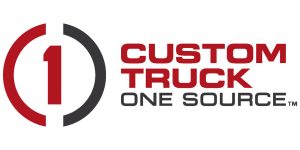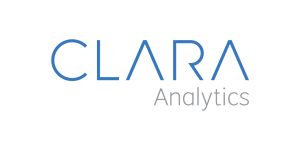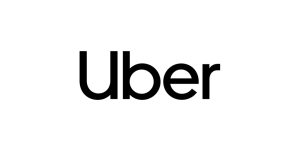Following Waning June Recovery, Kronos U.S. Workforce Activity Report Reveals Rocky Shift Growth, Hiring in Early July
LOWELL, Mass.–(BUSINESS WIRE)–#BusinessRecovery—Kronos:
|
National Overview: |
In alignment with the national July 4 holiday observance, total volume of shifts worked1 decreased by 11.4% from June 29-July 5, mirroring – and, in fact, falling short of – the decline in shifts that occurred the week of July 4, 2019 (-26.9%). According to the latest U.S. Workforce Activity Report from Kronos Incorporated, prior to the July 4 holiday, U.S. businesses had grown shifts by 32% since shift work hit “the bottom” the week ending April 12. Overall, shift volume remains down 24.3% since the week ending March 15 – the last week of “normal” shift work activity before the U.S. declared a national emergency. |
|
|
|
||
|
Job Growth: |
The delta between employee terminations2, which includes both voluntary and involuntary turnover, and new employee hiring3 widened during the week ending July 5. Prior to COVID-19, this ratio stood at nearly 1 termination for every 1 new hire; yet it currently stands at 2.8-to-1, the nation’s largest delta since the 3.2-1 ratio that occurred when employee shifts hit “the bottom” the week ending April 12. |
|
|
|
||
|
State Snapshot: |
For the first time since Memorial Day, all 50 states saw a decline in shift work due to the July 4 holiday. Across the U.S., 16 states experienced or surpassed an average of 100 new COVID-19 cases per 100,000 residents per week4, with 11 of these states seeing double-digit declines in shift work from June 29-July 5: Alabama (-14.0%); Arkansas (-10.6%); Georgia (-14.9%); Idaho (-11.2%); Iowa (-10.6%); Louisiana (-12.5%); Mississippi (-17.3%); North Carolina (-15.4%); South Carolina (-17.6%); Tennessee (-17.2%); and Utah (-12.9%). The Midwest5 (-13.8%) and Southeast6 (-12.6%) saw nearly double the week-over-week shift decline compared to the Northeast7 (-7.7%) and West8 (-8.4%). |
|
|
|
||
|
Industry Analysis: |
Five industries central to the U.S. economy were impacted to varying degrees by the July 4 holiday. Manufacturing saw the largest week-over-week decrease (-19.6%), while retail, hospitality, and food service, bolstered by holiday demand, held mostly flat (-1.7% week over week). Public sector, well into its anticipated slower summer season, declined 12.4% week over week. Services and distribution (-8.4%) and healthcare (-7.2%) saw modest holiday-related declines. Despite this dip, across all industries, shifts declined less during the 2020 July 4 holiday week than during the week of July 4, 2019. |
|
|
|
||
|
Commentary: |
Dave Gilbertson, vice president, HCM practice group, Kronos |
|
|
“Over the past six weeks, we have seen the national economic outlook begin to temper: The upward trendline of shifts, peppered with holiday-related declines correlating with Memorial Day and July 4, has slowed; the delta between terminations and hirings continues to swell; and industries continue to recover shifts at varying paces based on state reopenings, restrictions on travelers, and inconsistent consumer demand. While last week’s July 4-related shift decrease was not as large as expected based on historical data, we can’t yet come to any conclusions based on a single week – especially since the holiday fell on a weekend, which may impact vacation for a second week. Data over the next several weeks should indicate whether the relative strength of recovery is enough to reverse slowing shift growth amid nationwide COVID-19 case spikes.” |
||
|
|
||
|
Timeliness: |
The Kronos U.S. Workforce Activity Report provides near real-time insights into workplace activity for the immediate preceding week. The report is currently analyzed and released weekly and inclusive of data through July 5. Historical reports, beginning the week of April 13, 2020 are available at Kronos.com/USWorkforceActivity. |
Supporting Resources
- Note to editors: Please refer to report as “U.S. Workforce Activity Report by Kronos Incorporated for June 29-July 5, 2020.” Visit Kronos.com/USWorkforceActivity to view all reports.
- For practical guidance supporting employee well-being and workforce productivity, visit the Managing Through Times of Uncertainty resource center on Kronos.com and the COVID-19: Leadership in Uncertain Times resource center on UltimateSoftware.com.
- Read the eBook “HR’s Role in Business Continuity: COVID-19 and Beyond.”
- Connect with Kronos via Facebook, Instagram, LinkedIn, Twitter, and YouTube.
About Kronos Incorporated
Kronos is a leading provider of workforce management and human capital management cloud solutions. Kronos industry-centric workforce applications are purpose-built for businesses, healthcare providers, educational institutions, and government agencies of all sizes. Tens of thousands of organizations — including half of the Fortune 1000® — and more than 40 million people in over 100 countries use Kronos every day. Kronos merged with Ultimate Software on April 1, 2020, to create one of the world’s most innovative HCM and workforce management companies. Visit www.kronos.com. Kronos: Workforce Innovation That Works.
About Ultimate Software
Ultimate Software is a leading global provider of cloud human capital management (HCM) and employee experience solutions, with more than 51 million people records in the cloud. Ultimate’s award-winning UltiPro delivers HR, payroll, talent, and time and labor management, as well as HR service delivery solutions. Founded in 1990, Ultimate is headquartered in Weston, Florida, and employs more than 6,000 professionals. To learn more, visit www.ultimatesoftware.com. Ultimate Software: People First.
###
|
Footnote 1: “Shifts worked” is a total derived from aggregated employee time and attendance data and reflects the number of times that employees, especially those who are paid hourly or must be physically present at a workplace to perform their jobs, “clock in” and “clock out” via a time clock, mobile app, computer, or other device at the beginning and end of each shift. |
|
Footnote 2: “Terminations” is the aggregate number of employee profiles that are deactivated/removed from a Kronos cloud solution, indicating a termination of employment. The cause could be a layoff or resignation, as examples. Termination dates may be pre- or post-dated, creating minor variations in prior week’s data. |
|
Footnote 3: “New hires” is the aggregate number of new employee profiles created inside a Kronos cloud solution. A new employee profile is created when an individual is hired into a position. New hire dates may be pre- or post-dated, creating minor variations in prior week’s data. |
|
Footnote 4: Centers for Disease Control and Prevention COVID-19 U.S. case tracker: https://www.cdc.gov/coronavirus/2019-ncov/cases-updates/cases-in-us.html |
|
Footnote 5: For the purposes of this report, Midwest is defined as Illinois, Indiana, Iowa, Kansas, Michigan, Minnesota, Missouri, Nebraska, North Dakota, Ohio, Oklahoma, South Dakota, Texas, and Wisconsin. |
|
Footnote 6: For the purposes of this report, Southeast is defined as Alabama, Arkansas, Georgia, Florida, Kentucky, Louisiana, Mississippi, North Carolina, South Carolina, and Tennessee. |
|
Footnote 7: For the purposes of this report, Northeast is defined as Connecticut, Delaware, Maine, Maryland, Massachusetts, New Hampshire, New Jersey, New York, Pennsylvania, Rhode Island, Vermont, Virginia, and West Virginia. |
|
Footnote 8: For the purposes of this report, West is defined as Alaska, Arizona, California, Colorado, Hawaii, Idaho, Montana, Nevada, New Mexico, Oregon, Utah, Washington, and Wyoming. |
© 2020 Kronos Incorporated and Ultimate Software. All rights reserved. Kronos and the Kronos logo are registered trademarks and Workforce Innovation That Works is a trademark of Kronos Incorporated or a related company. See a complete list of Kronos trademarks. UltiPro is a registered trademark of The Ultimate Software Group, Inc. All other trademarks, if any, are property of their respective owners.
Contacts
Jessica DeVore
Kronos Incorporated
+1 978.244.6381
jessica.devore@kronos.com





















